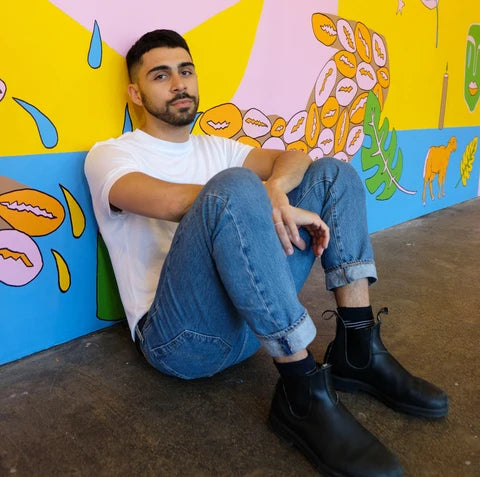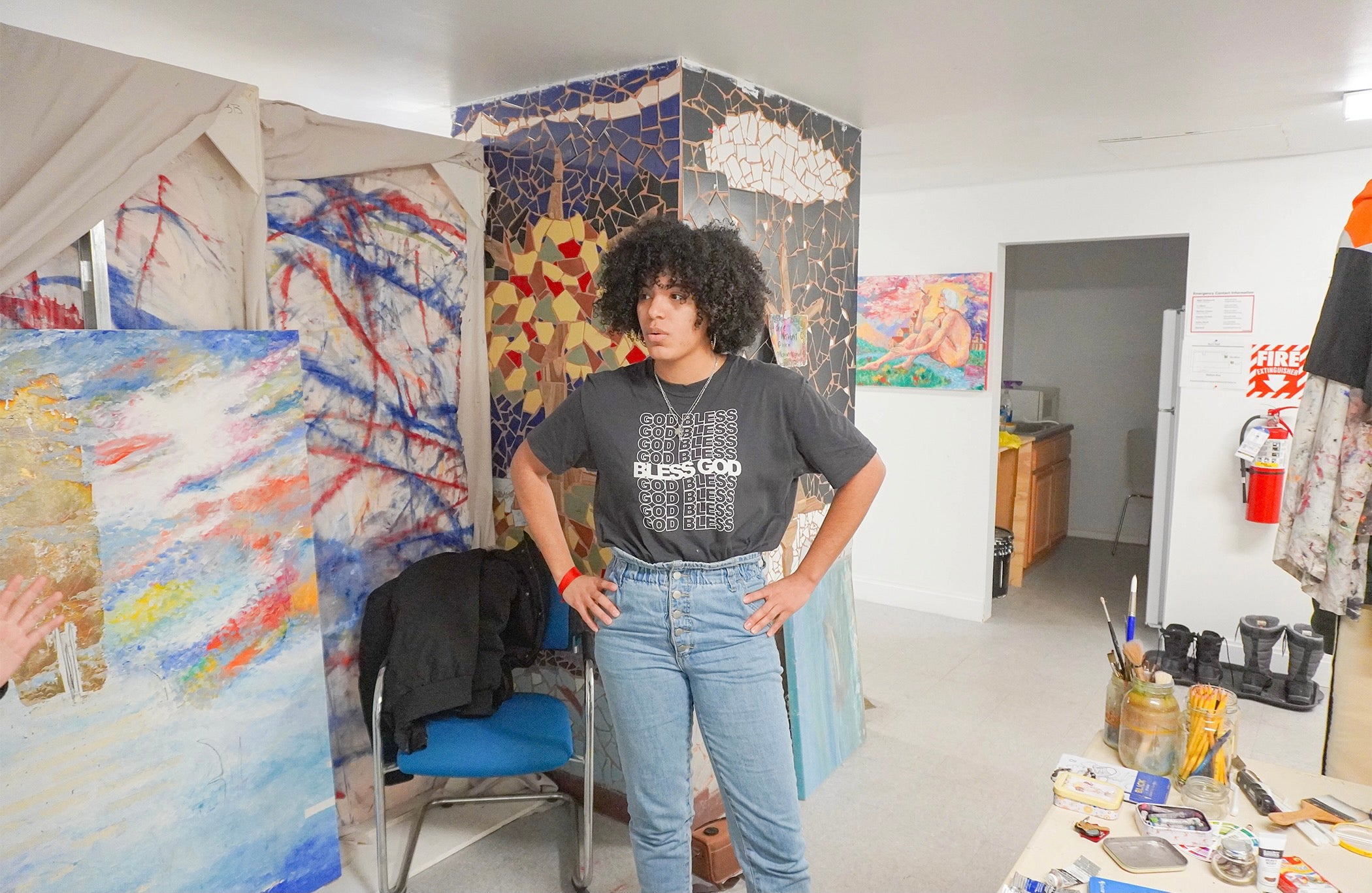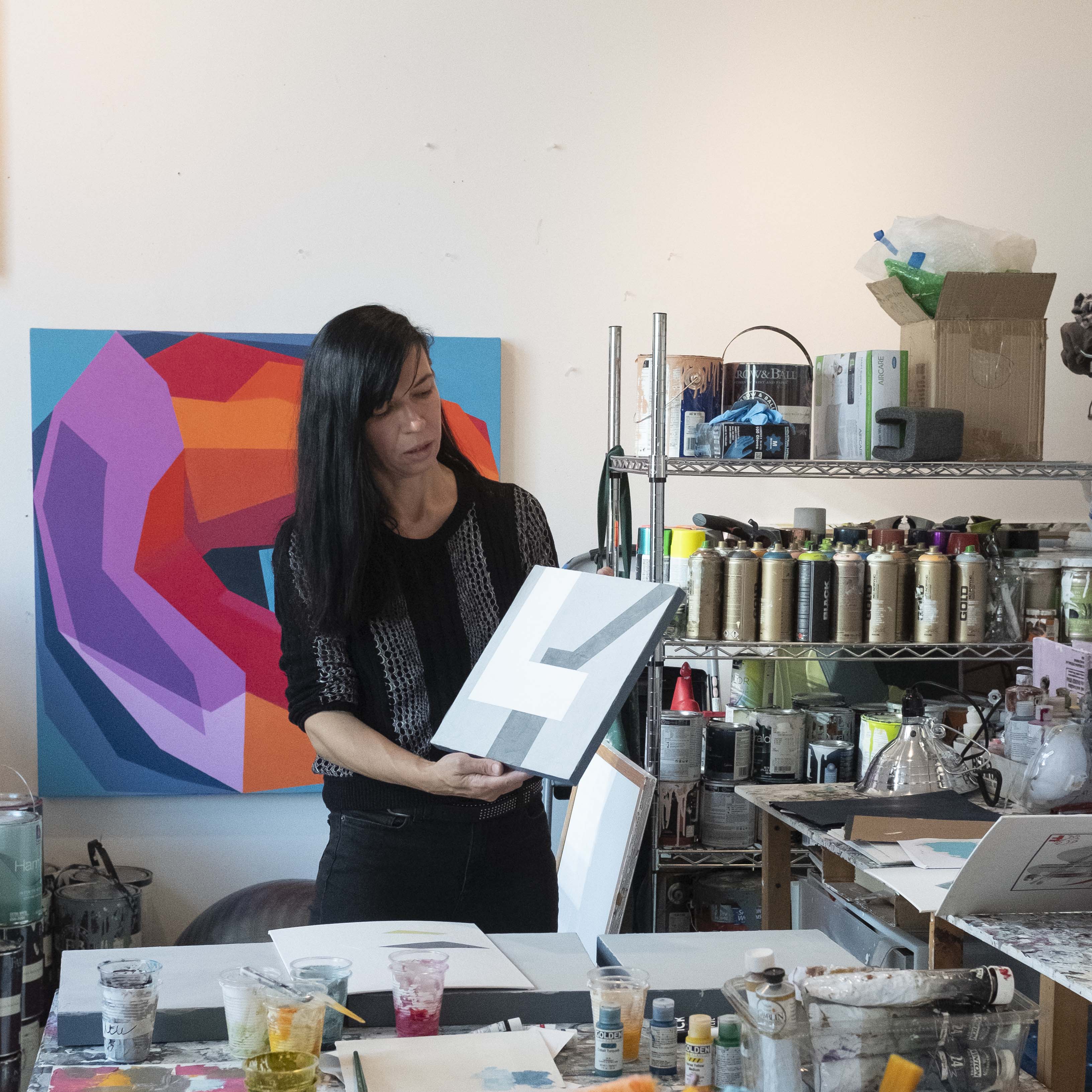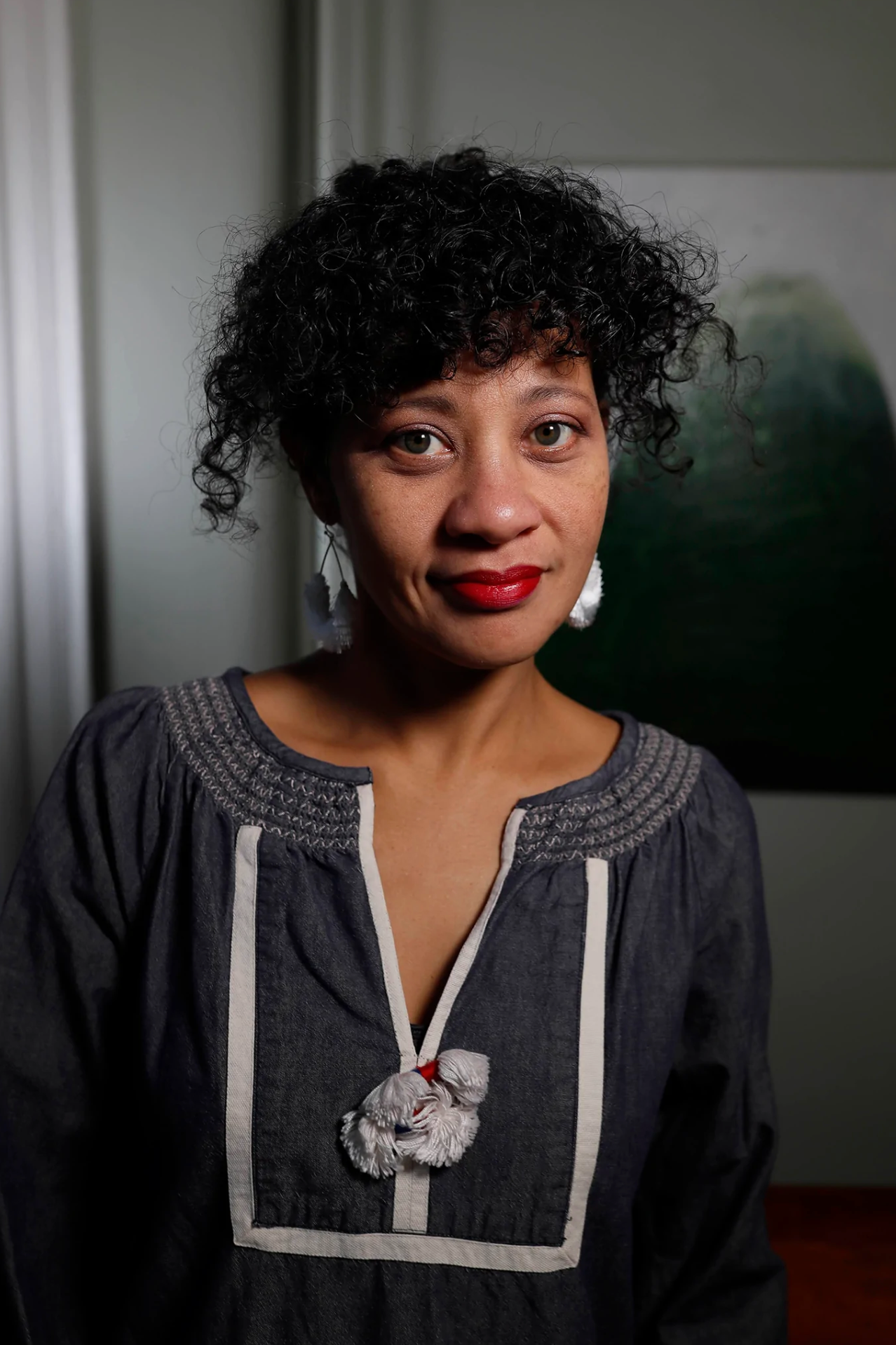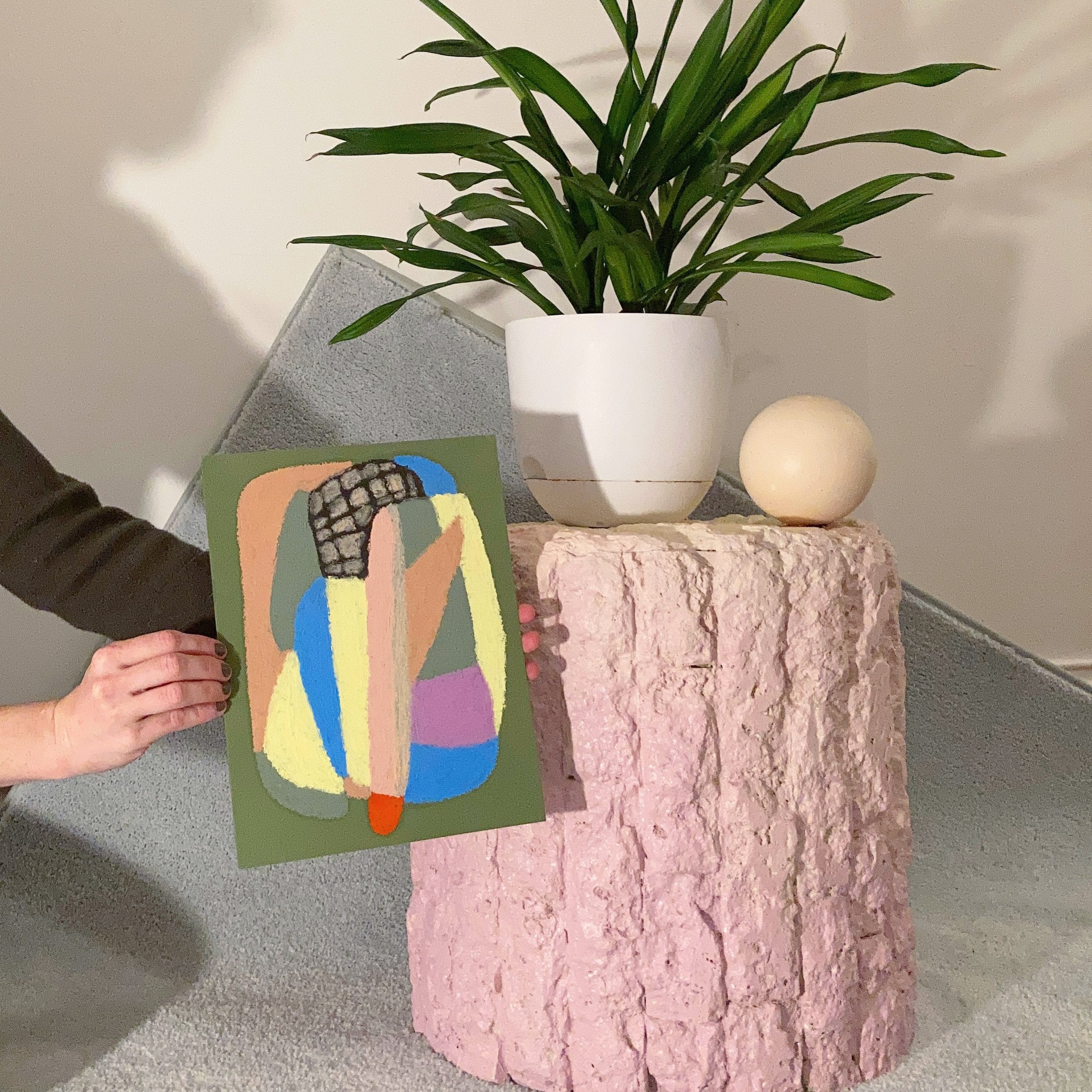No Products in the Cart
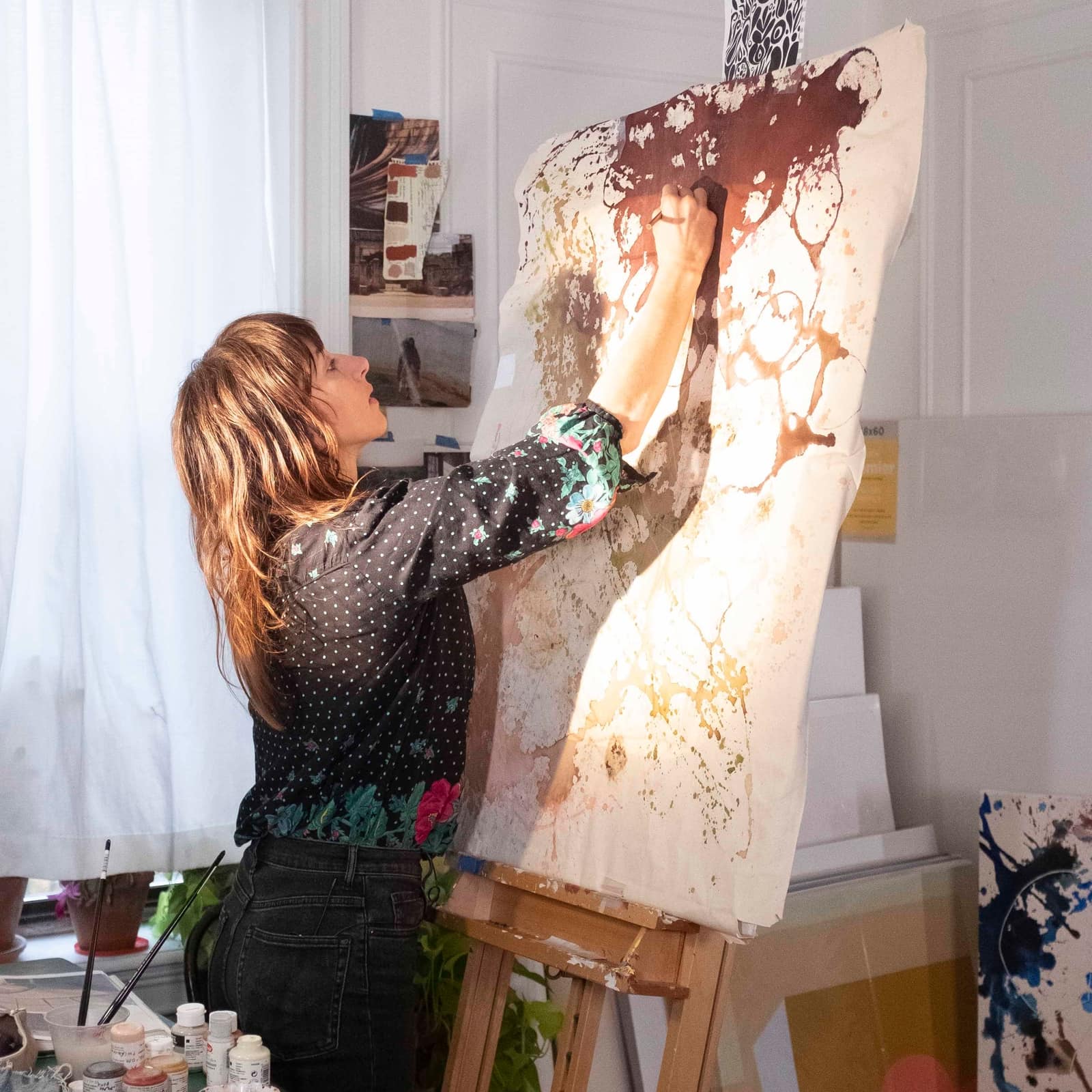
MEET KIMMY: COMPOSING WITH LINES AND STROKES

More from the Brooklyn-based, Wisconsin born painter Kimmy Quilin:
Q1. When did you move to New York.
August 2006. New York in specific, so much of what I looked up to as a kid came from New York. The Punk scene in the 80s, Saturday Night Live, and then living here is its own thing, there’s no media image of that. The city definitely affected my color palette.
I moved to this neighborhood about three years ago. There were these beautiful rows of brown stones, with this subtle, warm shade. When people see the earthy tones in my paintings they think it’s from my travels to Texas, but I think it really comes from my neighborhood.

Q2. What’s your favorite palette?
I like to work with warm tones a lot, my favorite season for a very long time was summer. This year was the first year that I really felt like Fall was worth looking forward to, and reflecting that, my most recent collection was a different take on those warm tones.

Q3. Can you tell me a little bit about your recent collection?
The series that I most recently completed was called Many Moons. It was a series of nine paintings that described the transition of the moon phases, from full moon to a new moon and back to a full moon.

Q4. Why did you choose Moon as your subject?
The moon has become more important in my life recently.
I practice Ashtanga yoga. And we get off from practice on the new moon and full moon days. The reasoning behind that is that on a full moon day, your body has too much energy in it, so you’re more prone to injure yourself; and on a new moon day, your body and the moon is on an emptier energy level. This got me really thinking about the moon.
Q5. You mentioned that you started doing yoga when you were fifteen, do you think about bodies a lot? Do you draw figures?
I just started drawing nude forms this year, and I’ve been hosting some live models here. I get to do that a couple of times a month, and it’s just fascinating. I wasn’t trained to do any representational art, so getting to spend that time trying to replicate something, I think is so cool.
I’m trying to weave some of that figures into the next series of work that I’m doing.

Q6. Can you tell me about your creative process?
I work in phases. I think My painting fall into two categories: one is very tight and geometrics with very clear lines and solid colors; the other is spontaneous movement with guiding geometric lines.
They fulfill different parts of who we are as people. The ones that are more clear cut, I think those are how we present ourselves publicly. And the ones with more spontaneous movements, I think those are what we feel like on the inside: emotions and their guiding lines.
Q7. What inspires these two different categories of paintings?
When I’m in the geometric frame of mind, the image usually just flash into my head all at once. The Many Moons series, I think I worked out sketches of all of the component pieces of that in like two days.
The spontaneous ones are more emotional to me. Because there are so many places where you may lose what you are trying to convey. It makes me nervous most of the time.

Q8. What are the challenges for you as an artist?
Time. I think in New York time is a huge thing. You can get away with being on a budget, you just get more creative. But having time to sit and marinate in thought and inspiration is the biggest challenge.
Q9. How do you choose your shapes.
I don’t think I choose them. Realistically, I think it depends on what I have access to tool-wise to make a shape.
For example, I started using photoshop a bit working on a mirror for my friend’s dance studio. And I created these gorgeous arch-shapes in photoshop. Then I went to make it in reality, and I realized that arches are really complicated. I was graphing them out on paper cutouts, and re-tracing them onto the wall. I love the arches and I would love to do more things like that, but I need to figure out new sets of tools.

Q10. What comes after this interview?
In February I’m going to a residency in Oaxaca, Mexico for three weeks. I’m collaborating with a dancer and musician down there. We’ll create some kind of temporal presentation.



